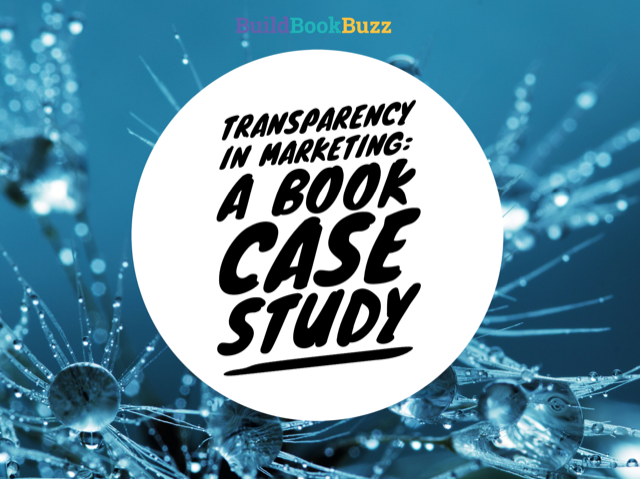Transparency in marketing: A book case study
This is the tale of a book, the author’s reputation, and reader expectations — and how all three left some of the author’s most enthusiastic fans disappointed.
Meet the Frugalwoods: Achieving Financial Independence Through Simple Lliving by Elizabeth Willard Thames is the story of how one millennial couple ditched the materialism of urban life to “retire” to their dream farm in Vermont when Thames was 32. (“Retire” is in quotes for a reason — more on that in a moment.)
The book is no doubt selling well and enjoyed by most, considering it has 200 reader reviews with an average rating of four stars.
But dig a little deeper — and I did, thanks to a tip from a colleague I won’t name in case she doesn’t want to be outed — and you’ll discover that many people who couldn’t wait to love the book were sorely disappointed, and for good reason.
Our tale begins with how the book is represented on Amazon. Here’s the story.
Part 1: What the book’s about
 Meet the Frugalwoods is a memoir. As the book’s description states, it’s “The deeply personal story of how award-winning personal finance blogger Elizabeth Willard Thames abandoned a successful career in the city and embraced frugality to create a more meaningful, purpose-driven life, and retire to a homestead in the Vermont woods at age thirty-two with her husband and daughter.”
Meet the Frugalwoods is a memoir. As the book’s description states, it’s “The deeply personal story of how award-winning personal finance blogger Elizabeth Willard Thames abandoned a successful career in the city and embraced frugality to create a more meaningful, purpose-driven life, and retire to a homestead in the Vermont woods at age thirty-two with her husband and daughter.”
It’s not a personal finance how-to book.
It’s the story of the author’s journey from here to there. You might learn a thing or two about how Thames managed her money while you take this journey with her, but it’s a memoir. If you read it with the expectation that you’ll learn her life’s story, you won’t be disappointed.
But if you’re a Frugalwoods fan expecting to be highlighting tips for how you, too, can “retire” at 32, you can put that highlighter away right now.
Part 2: How it’s categorized and positioned
The publisher specializes in business books; the book is categorized as “personal finance,” “budgeting & money management,” and “retirement planning.”
But it’s a memoir. Sure, there’s room for advice in a memoir, but it’s certainly not a classic business or financial planning book.
Some discovering this book while searching Amazon for personal finance top sellers who saw it has a ton of reviews and didn’t read the book description might buy it expecting to get all kinds of personal finance tips.
Part 3: The definition of “average”
The author described her household income as “average.” Yet, their move to the country involved selling the Cambridge, Mass., home they bought for $460,000. Many “average” income earners in Middle America can’t afford a home valued at nearly half a million dollars.
In addition, Amazon one-star reviewer “A B” reports that “According to public records, Nate made $225,000 in 2014 and $271,000 in 2016 working as a non-profit executive.” (Nonprofits are required to report this information.)
Reviewer A B had to search for the information online because it’s not in the book. That seems like a key point — something to share in a “personal finance” book. As a reader, before I’m impressed with what you’ve accomplished, I need to know your starting point.
Why is it missing? Probably because the author is trying to hide it.
A few other one-star reviewers singled out income as a key reason they were disillusioned after reading the book, too. Thames’s blog led them to believe her family is “just like us.” For many, though, they aren’t.
“Average” is relative, of course. You might argue that a nearly $300,000 income in Cambridge, home of Harvard University, is average. But the Bureau of Labor Statistics reports that the median annual income for millennials is $36,000.
A household income that exceeds $271,000 isn’t “average.”
Part 4: The definition of “retire”
A key selling point of this book is that the couple “retired” when the author was 32.
She “retired” only if you use the definition you have in mind when you say, “I don’t feel well, so I’m going to retire to my bed.”
They aren’t living off their savings for the rest of their lives. They’re working from home. Yes, they have more financial independence than many, but they aren’t “retired” from earning a living. They’re “retired” from their previous lifestyle.
Part 5: The key to success
The key to success, according to this book, is that to save a lot of money, you have to have a lot of money to save.
It reminds me of an old (OLD!) Steve Martin joke from his stand-up comedy routine, “You Can Be a Millionaire.” Steve says, “First, you get a million dollars.”
Turns out that an essential financial tip from the book is, “Start with a lot of money.” That might be hard for the “average” income-earner.
So what?
In spite of the grumbling among Amazon reader reviews and on other sites, the author will probably earn out her advance and receive royalties she and her husband can spend in their, um, “retirement.”
While the handful of one-star reviews are smart, thoughtful, and logical — these reviewers make an excellent case for their disappointment — they’re in the minority.
Clearly, many like what they read.
The moral of the story
Still, we can learn a few things from this little story.
I’d put the importance of honesty and transparency at the top of the list.
It’s hard for me to understand how Thames has achieved the status she has while carefully guarding her income information. I would need a specific before and after perspective before drinking the Frugalwoods-flavored Kool-Aid.
In addition, you’re doing something wrong if you’ve disappointed your biggest fans.
Blogger J.D. Ross of Get Rich Slowly makes it clear he’s an admirer, but he’s not blind enough to overlook a key detail about the book in a review on his site.
In an otherwise positive review, he writes, “The only real acknowledgement of the role income played in the process comes during the book’s introduction: ‘In order to save large amounts of money, you have to have a sufficient amount of money coming in,’ Liz writes. ‘You can’t frugalize income you don’t earn.’ That’s great, but it comes in the midst of a seven-page apology for “privilege” and not in the meat of the book. I think it’s a vitally important point, and the fact that the subject is wholly missing from Meet the Frugalwoods is a mystery to me.”
It’s not a mystery to me.
The author knows it would undermine her efforts to help others, so she hides it. While I’m sure she’s well-intended, it’s the blogger-turned-author-equivalent of an anger management guru caught flipping out at an airline employee over a flight delay.
Be true to yourself and your audience with your book, its packaging, and your marketing. In a world with so many citizen journalists ready to expose even the smallest indiscretion, you won’t get away with smoke and mirrors for long.
Have you ever felt misled about or by a book? Tell us about it in a comment.
Like what you’re reading? Get it delivered to your inbox every week by subscribing to the free Build Book Buzz newsletter. You’ll also get my free “Top 5 Free Book Promotion Resources” cheat sheet immediately!


I don’t recall a specific book that didn’t meet my expectations; however I was disappointed in the rushed way the Howard’s End mini series treated episode 4. Too much was omitted or covered quickly. My mind reeled trying to keep up with what happened to the characters.
Thanks, Ginger. That sounds frustrating.
Sandy
I once bought a guide for ADHD parents that in no way in the sales copy or on the book cover suggested it would be vehemently opposed to any medication. I don’t normally leave negative reviews, but I felt I should warn other parents who might be looking for help and thus reviewed it as misleadingly marketed in this regard. Soon after, I noticed all my other reviews had received one vote down by someone.
Thanks, Sandra. So, from a “what can we learn from this standpoint,” what should they have done differently? Included that information as part of the book’s description?
Sandy
I am in a writing group and of course, we do some reviews of folks we know personally. So writing an honest review requires some tact. I enjoyed a mystery story except for the main character, a young adult female. She kept making mistakes that really took away from the mystery, yet the writing was very good. I decided to say that in the review.
This article highlights some of the business hype we have to wade through for promotion. Thanks, Sandy, good lessons here.
Thanks, Judith. Your experience highlights one of the pitfalls of review swaps among colleagues.
Sandy
Yes. I ordered a book online about mindfulness, a Kindle book. I was expecting to find a lot of information about mindfulness and some in-depth handling of the topic. I read the description and some of the reviews, which were 80% 4 or 5 stars. I took a peek inside and the sampling seemed promising, there were 9 Chapters. The subtitle promised “how to live in the moment, stress and worry free in a constant state of peace and happiness.” The one thing I did not look at was how many pages, I don’t know if that information is even available for Kindle books. But it ended up being like 36 pages, some chapters were 1 and a half Kindle pages (screens). Too bad I did not come across this review before I bought it and was highly disappointed:
“Effectively an appetizer on the topic of mindfulness this book does little more than make the reader aware of the subject. Unfortunately, the title will lead people to think they are getting more than this elongated magazine article.
If you have never read an article or other books on mindfulness, then this book can be a good place to start. You won’t learn how to live in a constant state of peace and happiness (as promised in the subtitle) but you may have your curiosity piqued.
The lack of depth is exemplified by chapter two, where the author “covers” the topic of the importance of living in the present moment in a mere two pages. And by chapter nine, where how mindfulness is important in your everyday life receives a mere seven paragraphs and is just over a page in length. Substantive it is not.”
So live and learn, thankfully, I only spent .99 cents on it during a special promotion.